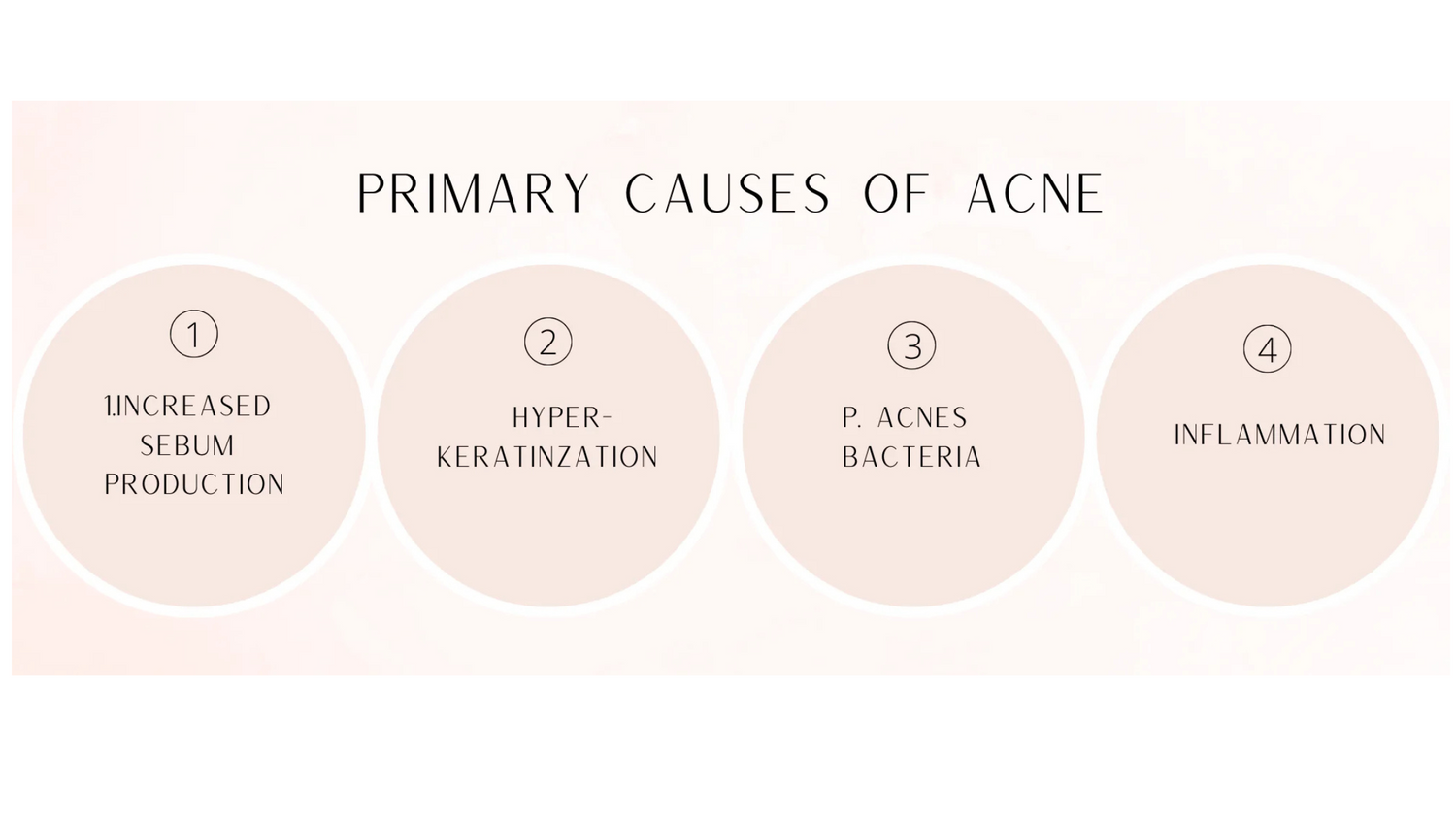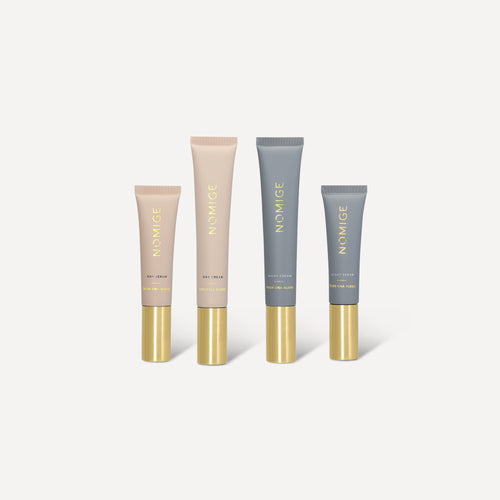Hormonale acne, ook bekend als "acne" of "acne vulgaris" is een van de meest voorkomende huidproblemen wereldwijd. Deze huidaandoening varieert van kleine comedonen en puistjes tot ernstige ontstekingsletsels. Bij de meeste mensen openbaart acne zich voor het eerst tijdens de puberteit. Vijfentachtig procent van de mensen tussen 12 en 24 jaar heeft last van acne1. Meestal verdwijnt het spontaan rond de leeftijd van 25 jaar. Toch kan de aandoening hardnekkig zijn en hebben sommige mensen er op volwassen leeftijd nog steeds last van. In deze blog gaan we dieper in op de oorzaken van acne en de rol van leefstijlfactoren.
De vier primaire factoren
Acne is een multifactoriële aandoening en wordt beïnvloed door 4 primaire factoren:

1. Verhoogde talgproductie
Talg is een olieachtige stof die door de talgklieren in onze huid wordt afgescheiden en de huid beschermt tegen uitdroging en externe factoren. Een verhoogde productie van deze vettige stof kan een verstopping van de poriën veroorzaken, waardoor microcomedonen of kleine puistjes ontstaan. Hormonen spelen een rol bij het ontstaan van acne, omdat zij de productie van talg regelen. Een verhoogde hormonale activiteit (voornamelijk mannelijke hormonen / androgenen) kan daarom leiden tot een verhoogde talgproductie. Je hormoonspiegels kunnen veranderen tijdens bepaalde fasen van je leven (bijvoorbeeld: menstruatiecyclus, puberteit, zwangerschap, ziekte) en als gevolg daarvan kun je op bepaalde momenten meer last hebben van acne-uitbraken.
2. Hyperkeratinisatie
Hyperkeratinisatie is een tweede belangrijk element in de ontwikkeling van acne. Laten we dit proces van 'hyperkeratinisatie' kort uitleggen: Onze huid vernieuwt zich om de 28 dagen. Tijdens dit vernieuwingsproces migreren nieuwe huidcellen van de bodem naar het huidoppervlak. De huidcellen ondergaan tijdens hun migratie naar het huidoppervlak een verandering in vorm en samenstelling. De bovenste cellen worden 'corneocyten' genoemd en bestaan uit oude, dode huidcellen die van de huid afschilferen. Zo kunnen nieuwe cellen naar het oppervlak migreren. Er worden dus voortdurend nieuwe cellen aangemaakt en oude cellen schilferen voortdurend af. Bij hyperkeratinisatie is er onvoldoende afschilfering (afbladdering) van de dode huidcellen. De corneocyten blijven aan het huidoppervlak plakken en er ontstaat een ophoping van deze oude huidcellen. De combinatie van hyperkeratinisatie en verhoogde talgproductie leidt tot verstopping van de poriën en de ontwikkeling van primaire acneletsels.
3. P. acnes bacteriën
Deze primaire acne laesies, rijk aan lipiden, vormen een ideaal groeimedium voor de anaërobe Propionibacterium Acnes bacterie. Deze bacterie is altijd aanwezig op de huid, maar kan onder bepaalde omstandigheden gedijen (idealiter een zuurstofarm kweekmedium zoals talg).
4. Ontsteking
Door de aanwezigheid van grote aantallen van dit type bacterie begint je immuunsysteem te reageren en de aanmaak van ontstekingsmediatoren zet de ontwikkeling van ontstekingsletsels in gang. Ontsteking resulteert dus in puistjes, papels, pijnlijke laesies, die, indien onbehandeld, kunnen leiden tot acnelittekens.

